Cats, with their myriad of personalities, are often fond of playful interaction that strengthens the bond between them and their human companions. One such delightful interaction is tickling, which, when done correctly, can elicit purrs of contentment from your feline friend. This guide, “How to Tickle a Cat,” provides you with the do’s and don’ts, tips, and techniques for tickling your cat in a manner that is enjoyable to both you and your furry companion. Remember, every cat is unique, so patience and careful observation are key in finding the tickling technique that your cat will love.
The Importance of Tickling a Cat
Tickling a cat is about more than mere play; it’s a conduit for deepening the bond between you and your pet. This seemingly simple interaction can have a profound impact on a cat’s overall well-being. Engaging in light, playful touch can help reduce a cat’s stress levels, promoting mental health. It also serves as a form of social interaction that reinforces the positive relationship between a cat and its owner. Furthermore, tickling can stimulate a cat’s sensory responses, keeping them alert and agile. However, it’s crucial to note that the tickling must be done in a way that respects the cat’s personal space and comfort levels, which will be discussed in the following sections.
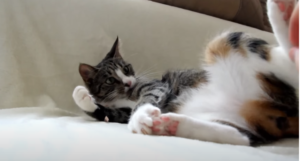
How to Tickle Your Cat
Begin by ensuring your cat is in a relaxed and comfortable state. It is advisable not to force the tickling interaction, particularly if your cat seems agitated or uninterested.
Pick the Right Moment
Choosing the right moment is crucial when you’re planning to tickle your cat. Start by observing your feline friend’s behavior. It’s best to wait until your cat appears relaxed — perhaps after a meal, or when they are lazily lounging in their favorite sunlit spot. Cats are generally more receptive to physical interaction during these moments of contentment. Avoid attempting to tickle your cat when they are sleeping, eating, or displaying signs of agitation. Remember, the key is to enhance their comfort, not disrupt it. Being mindful of their mood and respectful of their boundaries will ensure a positive tickling experience for your cat. [1]
Break the Ice
Before diving into a full-fledged tickle session, it’s essential to start slow and establish trust with your cat. This process is known as “breaking the ice.” Begin with some gentle petting along your cat’s back or near the base of their tail. Speak softly and reassuringly to your feline friend to further soothe them. Watch for signs of contentment such as purring, a relaxed posture, or half-closed eyes. If they seem comfortable and at ease, you can proceed with the tickling session. However, if your cat shows any signs of distress or discomfort, such as hissing, flattening their ears, or swishing their tail, it’s best to stop and give them some space. Remember, the goal is to create a pleasant experience for your pet and strengthen your bond through positive interactions.

Find Your Cat’s Spots
Just like humans, cats have their sweet spots for tickling. Commonly, these areas include the chin, cheeks, base of the tail, and sometimes the belly.
Always be gentle, observe your cat’s reactions closely, and respect their boundaries to ensure a joyful tickling experience. [2]
Gently Tickle Them
After identifying your cat’s preferred tickle spots and ensuring they are comfortable and relaxed, it’s time to start the tickling. Use your fingertips to deliver gentle strokes or light scratches to the identified areas. Make sure your touch is light and playful, not too intense or forceful. Your cat’s response will guide you; if they lean into your touch, purr, or display other signs of contentment, you’re doing it right. If they show any signs of discomfort, immediately stop and give them some space. This gentle, respectful approach to tickling helps foster a stronger bond with your cat and enhances their overall well-being. Always remember, patience and observation are key to a successful and enjoyable tickling session with your feline friend.
Full-Body Tickling
Full-body tickling is a comprehensive, gentle rubdown that engages more of your cat’s body – from the tip of their ears to the base of their tail. This approach generally works best with cats who already trust their human companions deeply and are comfortable with a higher level of physical interaction. To try full-body tickling, start by softly stroking your cat’s back, from their neck to the base of their tail, then gradually expand this motion to include the sides of their body. If they seem comfortable with this, you can also gently scratch behind their ears or under the chin. Make sure that your movements remain slow, rhythmic, and soothing. Watch your cat’s reactions closely. Purring, leaning, or kneading are all positive signs. However, if they show any signs of discomfort, such as hissing, tail swishing, or trying to move away, stop immediately and give them some space. Full-body tickling can be a wonderful bonding experience for you and your cat if done with respect for their comfort and boundaries.
Why Do Most Cats Only Enjoy Short Tickle Sessions?
Most cats only enjoy short tickle sessions due to their high sensory sensitivity. Cats are natural predators, and their bodies are wired to respond quickly to sensory input. This means they can become quickly overwhelmed by prolonged physical contact, even if it’s enjoyable. Furthermore, cats value their personal space and independence, so while they may enjoy a brief tickling session, they might also appreciate being able to retreat to their solitude afterward. Remember, every cat is unique, and their preferences for interaction can vary. Some may enjoy longer tickling sessions, while others prefer a quick scratch behind the ears or a belly rub. As always, the best approach is to observe your cat’s reactions and respect their boundaries. This ensures a positive experience for both you and your feline friend. [3]
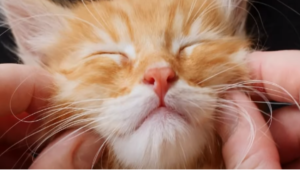
Correcting Aggressive Behavior in a Cat during Tickling
Occasionally, a cat might respond aggressively during tickling sessions. This could manifest as hissing, swatting, or attempting to bite. It’s essential to understand such behavior as a clear signal that your cat is uncomfortable. Here’s how to correct this:
- Stop Immediately: If your cat displays any signs of aggression or discomfort during a tickling session, your first step should always be to stop. This signals to your cat that you respect their boundaries.
- Give Them Space: After an aggressive reaction, it’s important to give your cat some space to calm down. Cats need time to reset their senses, especially after a stressful episode.
- Avoid Punishment: Never punish your cat for an aggressive response; doing so can result in fear or further aggression. Instead, use positive reinforcement techniques such as treats or praise to encourage desired behavior.
- Observe and Learn: Try to understand what might have caused the aggressive behavior. Was the tickling too intense? Did you touch a sensitive area? Use this information to avoid triggering aggressive behavior in future tickling sessions.
- Consult a Veterinarian or Pet Behaviorist: If your cat’s aggressive behavior continues, it may be a sign of underlying health issues or stressors. In such cases, it’s best to consult a professional for advice. [4]
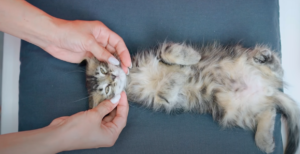
By understanding and respecting your cat’s boundaries, you can help prevent aggressive behavior and ensure that tickling remains a positive, enriching experience for both of you.
Worst Place to Tickle your Cat
The worst place to tickle your cat is typically the belly. Despite appearances, a cat showing their belly isn’t always an invitation for a tickle. In fact, the belly is a very vulnerable area for cats, and many cats feel threatened when their stomach is touched or tickled. Even if a cat seems to invite a belly rub by rolling over, it’s often a sign of trust. Tickling the belly can lead to an immediate defensive reaction, including scratching or biting. Always be mindful of your cat’s body language and responses, and avoid the belly unless you’re sure your cat enjoys being touched there. Remember, every cat is unique, and their tickle preferences can vary greatly. Always maintain a respectful approach and ensure your cat’s comfort and safety during tickling sessions.

Know When to Stop Tickling
Knowing when to stop tickling your cat is crucial to maintaining their comfort and trust. It’s vital to pay close attention to your cat’s body language during a tickling session. If they start to show signs of discomfort or agitation, such as tail flicking, ears flattening, body tensing, or trying to move away, this indicates that it’s time to stop. Vocal cues, like growling or hissing, are also clear signs that your cat is no longer enjoying the interaction. Remember, prolonged tickling can overwhelm a cat’s sensory system, so it’s always better to err on the side of caution and stop sooner rather than later. It’s also important to give your cat frequent breaks to rest and reset their senses. Always prioritize your cat’s comfort and needs over your desire to interact; this ensures a more positive experience for both of you. [5]
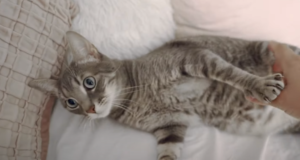
FAQ
Where are cats most ticklish?
Cats are most ticklish in areas where the fur is thinner and the skin is more sensitive. Such areas often include the base of the tail, under the chin, and behind the ears. These spots are generally favored by cats for grooming and social interaction, and can therefore be associated with positive experiences. It is important to remember, however, that each cat is unique with individual preferences. Always start gently and observe your cat’s reaction to ensure they are comfortable and enjoying the interaction. If they react positively with purring, leaning into the touch, or kneading, this is a good sign that they enjoy being tickled in that area. Always be respectful of your cat’s comfort and boundaries, and be prepared to stop if they show any signs of discomfort.
Why are animals not ticklish?
While it might seem that some animals, like cats and dogs, respond to tickling in a way that suggests they are ticklish, it’s important to understand that the concept of being ‘ticklish’ is largely tied to human perception and may not be the same across different species. The sensation of being ‘ticklish’ in humans is thought to be a complex response involving both the nervous system and a social element. In animals, what appears to be a ticklish response is more likely an instinctive reaction to unexpected touch, interpreted as a potential threat or a social grooming interaction. Therefore, it’s not accurate to say animals are ‘ticklish’ in the same way humans are, as their sensory perceptions and cognitive processes differ from ours. As always, when interacting with an animal, it’s crucial to observe their reactions and respect their boundaries to ensure a positive and comfortable experience.
What is light tickling called?
Light tickling, often causing a sensation of itching or prickling, is referred to as “knismesis”. This type of tickling usually doesn’t elicit laughter and can be triggered by a light touch or something as subtle as a feather stroke or an insect crawling on the skin. It’s a reflexive response and can be felt by various species, including humans and animals. Knismesis can serve as a protective mechanism, alerting an organism to the presence of crawling insects or parasites. In contrast, “gargalesis” refers to heavy tickling that causes laughter and is usually associated with playful interactions between individuals. Gargalesis is thought to be uniquely experienced by humans and some other primates, as it requires a cognitive understanding of the sensation and social context. However, individual preferences for both types of tickling may vary greatly among different species, and it’s always important to be mindful of an animal’s comfort and boundaries during any interaction.
How does a cat laugh?
While humans may associate laughter with an expression of amusement or joy, it’s important to understand that cats communicate differently than humans. Cats do not laugh in the way humans do. They do, however, show their happiness and contentment through a variety of other ways. For example, a relaxed, purring cat is generally a happy one. Other signs of a content cat can include a raised tail with a curved tip, slow blinking, kneading, and a relaxed posture. Cats might also engage in playful behavior, such as chasing toys or pouncing, when they are in a good mood. Always remember, each cat is unique and will have its own way of expressing happiness. Being attentive to your cat’s individual behaviors and responses will help you understand their feelings better.
Do cats enjoy human touch?
Cats can indeed enjoy human touch, but this largely depends on their personality, upbringing, and socialization. Some cats may seek out human touch and enjoy a good petting session, while others may be more independent and prefer less physical contact. Key areas that cats usually enjoy being petted include behind the ears, under the chin, and along the cheeks. When a cat is comfortable and enjoys the petting, it may purr, close its eyes, or lean into the touch. It’s important to remember, however, that each cat is an individual with its own preferences. Always pay attention to the cat’s body language and reactions to ensure that the touch is welcome and comfortable. If a cat moves away, flicks its tail, flattens its ears, or shows any signs of discomfort, it’s best to stop and give them some space. Respect and understanding are essential in creating positive human-cat interactions.
Can cats be autistic?
The term ‘autism’ is specifically used to describe a neurodevelopmental disorder found in humans, and it’s characterized by challenges with social skills, repetitive behaviors, speech, and nonverbal communication. Currently, veterinary medicine does not officially recognize autism in cats or other animals. However, some behaviors in cats—like repetitive actions, social withdrawal, or unusual reactions to sensory stimuli—can seem similar to characteristics observed in autistic humans. But these behaviors can also be signs of other conditions or stressors, such as anxiety, illness, or discomfort. Therefore, if you notice any changes in your cat’s behavior, it’s important to consult with a veterinarian to identify any potential health problems and provide appropriate care. Remember, it’s essential to treat each cat as an individual and respect their unique needs and behaviors.
Can cats smile at you?
Cats do not smile in the same way humans do, as their facial structures and emotional expressions are quite different from ours. A “smile” in the human sense involves specific muscles in the face that cats simply do not possess. However, that doesn’t mean cats cannot express happiness or contentment. Their expressions of joy or satisfaction are just communicated differently, often through body language. A content cat may exhibit behaviors such as purring, slow blinking, kneading, and a relaxed posture. A cat with its ears forward, relaxed whiskers, and a softly waving tail can also be considered to be in a positive mood, somewhat akin to a human smile. It’s important to remember that body language can vary between individual cats, so becoming familiar with your own cat’s unique signals is key in understanding their emotions.
Where do cats like kisses?
Cats generally tend to have a nuanced preference when it comes to showing affection and receiving kisses from their human companions. Many cats prefer petting or grooming over direct kisses, as the latter can be perceived as a threat or violation of their personal space by some cats. However, some cats do seem to tolerate or even enjoy gentle kisses or nuzzles from their trusted humans, particularly on their forehead, between the ears or under the chin, where scent glands are located. It’s important to watch the cat’s reactions and body language during these interactions. Always approach your cat slowly and gently, and if it shows any signs of discomfort or retreats, respect its space. Remember, each cat is unique and will have individual preferences and boundaries.
Why is tickling not fun?
While tickling can sometimes result in laughter or amusement, it is not always perceived as enjoyable. The response to tickling is often involuntary and can create a sensation of being out of control, which can be uncomfortable or distressing for some individuals. Additionally, the areas of our bodies that are most ticklish, such as the underarms, the neck, and the feet, are also some of our most vulnerable. Therefore, being tickled can trigger a defensive response and induce feelings of vulnerability or anxiety. Furthermore, continuous tickling can become physically uncomfortable or even painful after a certain point. It’s crucial to always respect individual reactions and boundaries when it comes to tickling, whether it involves humans or animals.
Which animal will laugh when tickled?
The most notable animal that exhibits a laughter-like response when tickled is the rat. Research conducted by neuroscientist Jaak Panksepp found that young rats emit high-pitched chirps, similar to human laughter, when being tickled. These chirps are associated with positive emotions and playfulness. Moreover, the tickled rats would seek more tickling and even chase the researcher’s hand, indicating that they might enjoy the tickling sensation. However, it’s important to note that these chirps are beyond the range of human hearing and need special equipment to be detected. While these sounds are not laughter in the human sense, they serve a similar function in social communication among rats. Other animals, such as dogs and cats, may also make vocalizations or exhibit playful behaviors when tickled, but more research is needed to confirm if these responses are analogous to human laughter. It’s essential to remember that each animal species has its own unique behaviors and communication methods, and it’s important not to anthropomorphize them.
Useful Video: How To Tickle a Cat
Conclusion
In conclusion, understanding the behavior and preferences of your cat—or any pet—requires patience, observation, and a respect for their individuality. Cats, like people, have their own unique personalities and ways of expressing affection or pleasure. While they might not smile or laugh as humans do, they certainly have their own special ways of showing happiness. Remember, when interacting with your pet, it’s crucial to pay close attention to their reactions and respect their boundaries. Whether it’s petting, kissing, or even tickling, always ensure the interaction brings comfort and joy to your pet and strengthens the beautiful bond between you.
References:
- https://welovecatsandkittens.com/cat-care/are-cats-ticklish/#:~:text=Mine%20does%20that!-,The%20best%20spots%20on%20a%20cat%20to%20tickle%20are%20the,to%20your%20furry%20feline%20friends.
- https://www.animalfoodplanet.com/how-to-tickle-a-cat-a-beginners-guide/
- https://www.dailypaws.com/cats-kittens/behavior/are-cats-ticklish
- https://catsloaf.com/how-to-tickle-a-cat/
- https://blog.catbandit.com/how-to-tickle-a-cat-a-step-by-step-guide/

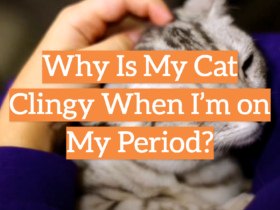



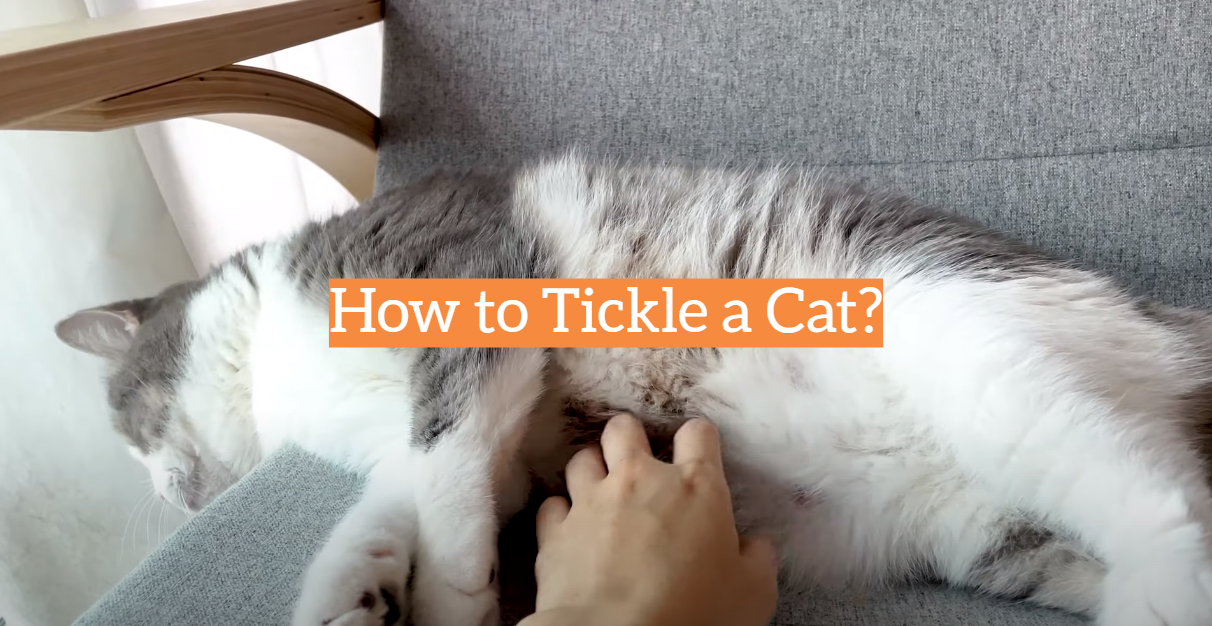




Leave a Reply